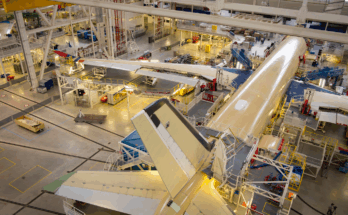By J. Kasper Oestergaard, European Correspondent.
For quite some time now, the future of the Airbus A380, the largest passenger airliner in the world, has been a hot topic in the aviation industry. Airbus has repeatedly expressed its commitment to re-engine the A380 and potentially also launch a stretch variant. At this year’s Paris Air Show, Airbus CEO Fabrice Brégier reaffirmed that Airbus plans to move to an A380neo-type aircraft, with service entry between 2020 and 2025. Emirates, by far the largest A380 customer, has expressed interest in ordering up to 200 A380neos on top of the 140 current-generation A380s the airline already has on order. So why has Airbus not yet officially launched the A380neo? Is the business case for the aircraft simply not compelling enough, even with Emirates buying as many as 200 additional aircraft?
The decision whether to launch a $2.2 billion re-engining of the A380 is perhaps even more complex than the original launch decision in 2000. This at a time when the total $25 billion A380 development cost has yet to be recouped. It is difficult to argue for further investment in a program that has yet to turn a profit. Airbus has announced that it expects to break even on the A380 later this year, and aircraft will now no longer be built and delivered at a loss. According to analysts, Airbus is unlikely to ever recover its total development cost.
When the A380 was launched in 2000, the world was a different place and the Boeing 747-400 was a key component of most long-haul fleets. Airbus predicted as many as 1,200 deliveries over the first 20 years of the program but, as we all know now, 10 years after production commenced, actual A380 orders and deliveries do not even come close. As of July 31, 2015, Airbus had delivered just 167 planes (64 to Emirates) and has a backlog of orders for another 150 (76 for Emirates). At the current production rate of 30 aircraft per year, Airbus has another five years of production in place. However, doubts remain over the robustness of some of the existing backlog, such as Virgin Atlantic’s order for six aircraft. At the same time, Qantas and Air France have deferred deliveries.
Some market commentators have questioned whether there will even be a sustainable long-term market for very large widebody jets such as the A380 and Boeing 747-8. Adding to that, the recent slump in the price of oil has weakened the case for more fuel-efficient engines.
If Emirates orders an additional 200 A380neos, there is a business case for the aircraft. It is estimated that it would cost $2.2 billion to develop the A380neo. If that is correct, it would take about 50-70 A380neos to recoup the investment. Assuming no further orders are placed for the current-generation A380, Airbus would have to start A380neo production in the fall of 2019 to maintain the current production rate.
It is the author’s expectation that Airbus will launch the A380neo no later than 2017, with first delivery in 2020. There is a business case for the aircraft, so long as Emirates makes good on its promise to order 200 A380neos. It is also a matter of pride and prestige to Airbus. If Airbus is not launching the A380neo, the A380 could go down in history as a commercial failure.
Quick Facts
Cost to develop: A380 – $25 billion. A380neo – $2.2 billion
List Price: $428 million
Orders: 317
Deliveries: 167
Backlog: 150
Production Rate: 30 aircraft per year
Capacity: Up to 853 passengers
Joakim Kasper Oestergaard is the Managing Director of Forecast International’s AeroWeb subsidiary and a former employee of Barr Group Aerospace. He is an expert in aerospace & defense market intelligence, fuel efficiency in civil aviation, defense spending and defense programs.
A military history enthusiast, Richard began at Forecast International as editor of the World Weapons Weekly newsletter. As the Internet grew in importance as a research tool, he helped design the company's Forecast Intelligence Center and currently coordinates the EMarket Alert newsletters for clients. Richard also manages social media efforts, including two new blogs: Defense & Security Monitor, covering defense systems and international issues, and Flight Plan, which focuses on commercial aviation and space systems. For over 30 years, Richard has authored the Defense & Aerospace Companies, Volume I (North America) and Volume II (International) services. The two books provide detailed data on major aerospace and defense contractors. He also edits the International Contractors service, a database that tracks all the contractors involved in the programs covered in the FI library. More recently he was appointed Manager, Information Services Group (ISG), a new unit that encompasses developing outbound content for both Forecast International and Military Periscope.




